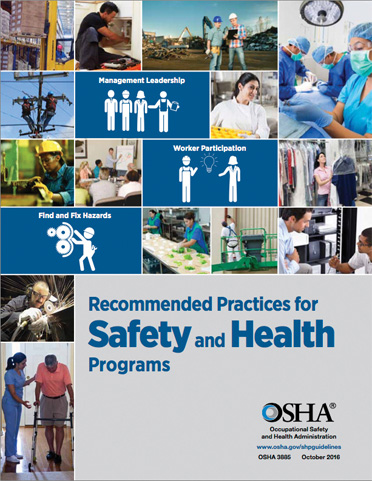
In the workplace, safety should be your No. 1 goal. Are you looking to start a safety and health plan in your shop? Or has it been a while since you’ve addressed these important topics and you don’t know where to start?
OSHA released its “Recommended Practices for Safety and Health Programs” to help employers establish a methodical approach to improving safety at their workplaces. As part of its recommendations, OSHA lists 10 easy things to focus on as you think about your current program. This month’s column will focus on the first five, and our next column in July will focus on the last five.
Five Starting Points
1. Set safety and health as a top priority.
This is a key agenda item for shop management. Your employees should know when they walk in the door that safety takes precedence over everything else. It should be evident to customers as well.
When problems do arise, make sure that employees know they can bring a situation to management and that problems will be addressed. A shop should make a demonstrable commitment to workers to fix things that may injure them or make them sick.
A written policy is a good way to let employees know your shop is serious about safety. Be sure the policy is accessible to everyone in the shop.
2. Lead by example.
Practice safe behaviors yourself, and make safety part of your daily conversations with workers. It should be a frequent topic at your tailgate or morning meetings. Focus on solutions, not on problems.
Part of leading by example is “practicing what you preach.” This includes wearing your personal protection equipment (PPE) while on the job; cleaning up spills promptly to help prevent slips, trips and falls; fixing electrical hazards immediately; and making sure safety data sheets are up-to-date and easily accessible. Fixing hazards on the spot emphasizes your commitment to safety and provides a leading and learning opportunity.
3. Implement a reporting system.
Your shop should have an easy way for workers to report injuries, illnesses, incidents, hazards or safety and health concerns. When employees start with the company, the topic of safety should be a priority.
Eligible employers must fill out and post a summary of work-related injuries and/or illnesses annually, even if no recordable work-related injuries or illnesses occurred during the year. Even if you have fewer than 10 employees and are not required to report injury and illness information, it is still a good idea to keep records and point out patterns to help prevent future problems.
Consider an anonymous reporting system to ensure that all employees feel comfortable communicating about hazardous workplace situations.
4. Provide training.
OSHA requires that employees be trained on the hazards of their particular workplace. In a shop, these hazards can include chemicals, dust and airborne particles. When workers are trained on the hazards, they’re better able to control their own behavior as well as the environment around them.
Training is required for all employees annually, and also when a new hazard enters the workplace. For example, if your shop introduces a new chemical, all employees who use or are exposed to that chemical must be trained on its proper use and storage.
5. Conduct inspections.
At least annually, walk around the shop to inspect the workplace. Start conversations with employees, asking them to point out any piece of equipment, activity or other materials that may potentially create a hazardous situation. Use checklists to identify problems, and take notes on items that may need follow-up.
Making It Stick
It’s important that employees feel they’re part of the safety process. They should be involved in establishing, operating, evaluating and improving your shop’s safety and health program, and have a forum and feel comfortable providing input about potential problems in the workplace. In return, employers should provide feedback to demonstrate that employees’ safety and health concerns are valid and being addressed.














